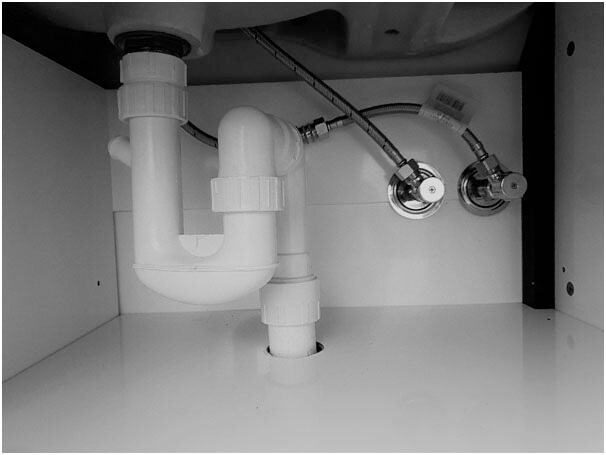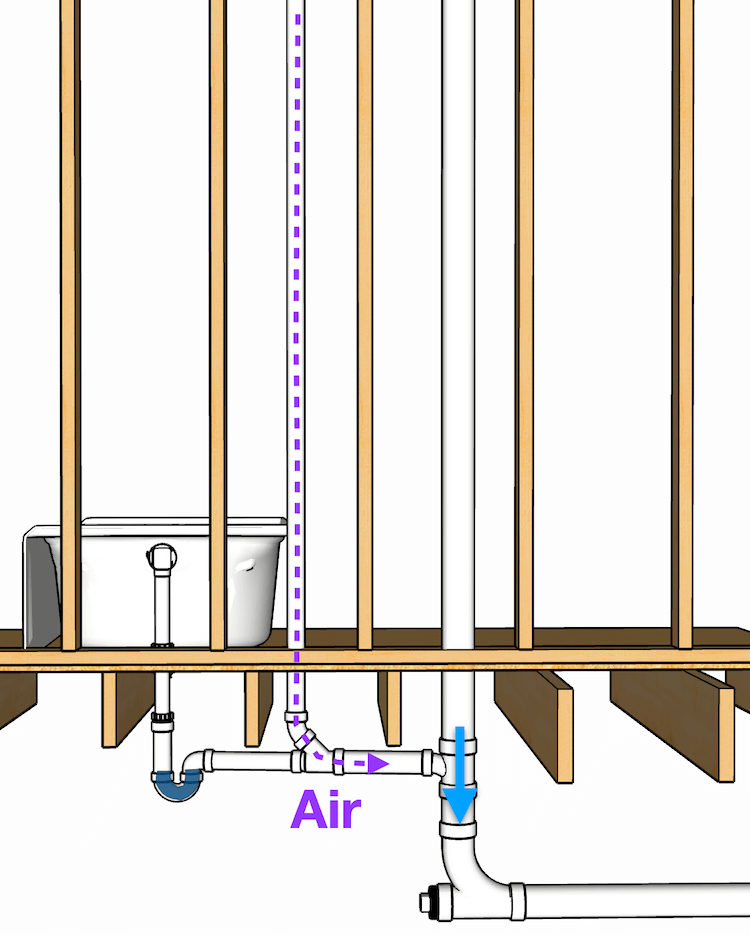How Correct Ventilation is Crucial in Plumbing Systems
How Correct Ventilation is Crucial in Plumbing Systems
Blog Article
This article further down involving The Upsides of Proper Ventilation in Plumbing Design is rather compelling. Don't miss out on it.

Appropriate ventilation in plumbing systems is commonly forgotten, yet it is essential for preserving the performance and security of your home's pipes. Air flow assists manage air pressure, prevent the build-up of dangerous gases, and ensure the efficient removal of waste. In this overview, we will certainly check out the significance of correct plumbing ventilation, just how it functions, and the benefits it offers your pipes system.
Understanding Ventilation in Plumbing
Ventilation in plumbing refers to the network of pipelines that permit air to flow through the water drainage system. These vents offer several purposes, consisting of regulating atmospheric pressure within the pipes, preventing sewage system gases from entering the home, and assisting in the smooth circulation of wastewater.
Exactly How Air Flow Functions in Pipes Equipments
Atmospheric Pressure Law
Proper ventilation maintains well balanced air pressure within the plumbing system. When water moves with pipes, it displaces air. Without ample ventilation, this variation can develop unfavorable pressure, causing slow down drains pipes or siphoning of water from traps, which can trigger undesirable odors to seep right into the home.
Stopping Sewer Gas Buildup
Among one of the most important functions of pipes vents is to avoid sewer gases, such as methane and hydrogen sulfide, from gathering within the home. These gases can present serious wellness risks and are very flammable. Vent pipelines allow these gases to leave safely outside.
Aiding in Waste Elimination
Ventilation assists in the effective removal of wastewater by preventing airlocks in the water drainage system. When air can move easily with the vents, it allows water and waste to stream smoothly with the pipes, minimizing the danger of blockages and back-ups.
Kinds Of Plumbing Vents
Main Stack Vent
The major pile vent, also referred to as the vent pile, is the main vent in a plumbing system. It prolongs from the main drainpipe align via the roof covering, enabling gases to escape and fresh air to go into the system.
Branch Vent
Branch vents link to the primary pile air vent and serve specific fixtures, such as sinks, commodes, and showers. These vents ensure that each fixture has adequate air flow to work effectively.
Air Admission Valve (AAV).
An Air Admission Shutoff (AAV) is a one-way valve that allows air to go into the plumbing system without the demand for a standard air vent pipeline extending with the roof covering. AAVs are frequently used in improvements or locations where installing a conventional air vent is not practical.
Indications of Poor Ventilation in Plumbing.
Slow Draining Fixtures.
If your sinks, tubs, or commodes are draining pipes gradually, it could be a sign of poor air flow. Insufficient air flow can produce a vacuum impact, making it tough for water to drain pipes appropriately.
Gurgling Sounds.
Gurgling audios coming from drains are often an outcome of air being drawn through water catches because of negative stress in the pipes. This is a clear indicator of not enough ventilation.
Unpleasant Smells.
Sewer smells inside your home are a red flag that your pipes system is not appropriately ventilated. This might mean that sewage system gases are not being properly vented outside, causing possibly dangerous problems.
Typical Air Flow Blunders.
Insufficient Vent Sizing.
Utilizing small vent pipelines can lead to inadequate air flow and stress discrepancies in the system. It's vital to use vents that meet the details needs of your plumbing system.
Improper Vent Placement.
Putting vents as well far from the components they serve can decrease their effectiveness. Appropriate positioning makes certain that air can flow freely and effectively through the system.
Ignoring Code Requirements.
Building codes provide certain standards for pipes air flow. Overlooking these codes can result in a system that falls short to function properly and might lead to costly repair services or carcinogen.
Advantages of Proper Ventilation.
Boosted System Performance.
Properly aerated pipes systems run extra effectively, with fewer clogs, faster draining pipes, and much less stress on the pipes. This performance extends the life-span of the plumbing system.
Improved Air Quality.
By stopping sewage system gases from entering your home, appropriate ventilation contributes to far better indoor air high quality, making your living environment healthier and extra comfortable.
Preventing Water Damage.
Appropriate ventilation assists protect against water from being siphoned out of catches, which can lead to drain gases getting in the home and creating water damage over time.
Actions to Ensure Correct Air Flow.
Consulting Plumbing Codes.
Constantly speak with neighborhood pipes codes when designing or customizing your plumbing system. These codes offer the essential standards for proper airing vent and ensure your system satisfies safety and security requirements.
Normal Evaluation and Upkeep.
Normal assessments can help determine possible air flow issues before they become major troubles. Maintenance tasks, such as cleaning up vent pipes and checking for blockages, are necessary for maintaining the system in good working order.
Specialist Installment.
For new installments or major alterations, it's wise to hire a professional plumbing technician. They have the experience to make certain the ventilation system is correctly created and installed according to code.
Final thought.
Appropriate ventilation is a critical component of any pipes system, making certain that it operates successfully and safely. By comprehending the significance of ventilation, identifying the signs of inadequate air flow, and taking steps to keep your system, you can protect against expensive concerns and shield your home's air top quality.
4 Things You Should Know About Your Plumbing Vents
What Plumbing Vents Are
Also called a vent stack, a plumbing vent is a vertical pipe attached to your drain line that runs through your roof. The plumbing vent pipe, or plumbing air vent, removes gas and odors from your plumbing system and allows fresh air to enter the pipes, helping the water to flow out of the drain pipes.
What Plumbing Vents Do
Plumbing vents have two basic functions. One of which is to allow unpleasant smelling wastewater and sewer gasses to escape your plumbing system instead of entering your home. Plumbing vent pipes are typically located on roofs, away from windows, to ensure the fumes exit the home completely.
The other function of the plumbing vent is to move fresh air into your plumbing system. This helps move water through every plumbing fixture in your house, like toilets and sink drains. Think of the way in which you need to let a little air into the bottle as you pour soda in order to make the drink flow smoothly.
Different Types of Plumbing Vents
True vent: This is the most common vent option. In simplest terms, a true vent is a vertical pipe attached to your drain line that exits through the roof. They often function as the main vent that other fixtures can connect to. Re-vent pipe or auxiliary vent: Attached to the drain line near specific plumbing fixtures, re-vent pipes run up and over to connect to the main vent. Common vent: Two plumbing fixtures installed on opposite sides of a wall are typically tied into the vent stack using something known as a sanitary cross. Wet vent: This venting option operates as a drain pipe and a vent at the same time. Wet vent drainage systems drain water from one fixture while venting the air from another. Although they’ve been used for over 100 years, wet vent systems have only recently been added to the plumbing code in many areas. If you’re planning on installing one in a bathroom remodel, make sure you check your local code prior to construction. Loop vent: For free-standing fixtures like kitchen island sinks, loop vents are ideal. These vent pipes run under the floor, rise from the P-trap, and create a loop inside the cabinet sink. Air admittance valve: An AAV is a one-way mechanical valve typically installed at the site of the plumbing fixture. AAVs allow venting to occur without having to tie into a larger venting system. They’re ideal for venting fixtures where you aren’t able to easily connect to an existing vent system. Common Plumbing Vent Issues
Although vent pipes typically don’t have water flowing through them, they’re still subject to many typical plumbing issues. For example, clogs are one of the most common problems associated with sewer vent pipes. If your vent pipe gets clogged, all of your plumbing fixtures tied into the vent stack will be affected.
A sink with a slow drain that bubbles and gurgles or a strong sewage smell around your toilet are both indicators that your toilet vent pipe is clogged. Because most vent pipes exit through the roof, old leaves, twigs or even a bird’s nest could be clogging the pipe.
Clogs in your vent pipe system cause a buildup of negative pressure, meaning that water won’t be able to flow out of your home very well. It’s similar to putting your finger over the opening of a straw to trap water inside. When you remove your finger, the water is able to flow out of the straw.
If you suspect you have any blockage in your vent, make sure you have a professional come examine the situation. Left unchecked, a blocked air vent can lead to other costly repairs, like leaks and sediment buildup.
Under Pressure
Pipe vents are essential aspects of a home’s plumbing system. Owning a home means learning about all sorts of things you never put much thought into before. But by understanding as much as you can about the important systems of your home, you can keep those budgets intact and those anxiety levels low.
https://www.homeserve.com/en-us/blog/home-improvement/plumbing-vents/

We are very inquisitive about What Is a Plumbing Vent and Why Is It Important and I hope you enjoyed my post. Appreciated our blog entry? Please quickly share it. Help others check it out. Thanks for your time invested reading it.
Call Today Report this page